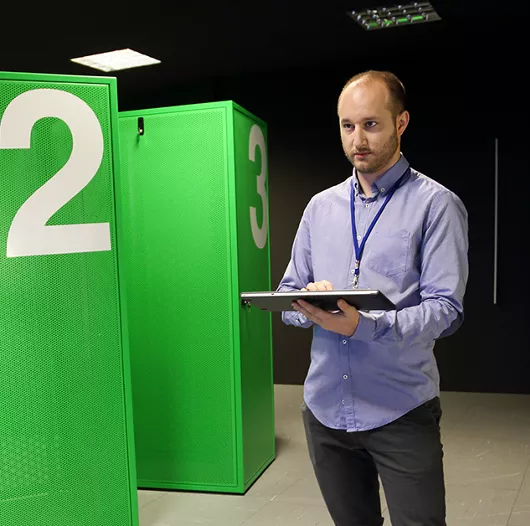The Surprise Behind the Green Enterprise


If you buy into the conventional wisdom, the concept of fostering pro-environmental business practices and operating to make a profit at the same time is a fallacy. But this seemingly obvious contradiction deserves a rethink.
Consider what happens when an organization reduces waste or cuts down on the amount of energy it consumes. Industrial companies have more-or-less direct control over these factors and can impact them to some degree with their day-to-day choices. Other companies have more indirect control over these aspects in their value chain but can still exert some influence. Not only do those steps help cut costs and improve overall efficiency, but any savings fall directly to the bottom line. And the motivation for this has little to do with being green. These are all actions an organization might otherwise take for purely financial reasons, but they are still also beneficial for the environment.
What’s more, don’t underestimate the halo effect this will have on a company’s reputation. Organizations identified as sustainable are going to find it easier to hire qualified people – no small consideration nowadays amid an ongoing labor shortage where the competition for skilled talent remains keen – because they’re identified as forward-thinking businesses.
A recent Hitachi Vantara survey conducted with Industry Week asked interviewees about benefits they expected from their sustainability efforts.
An increased focus on sustainability and green transformation also improves an organization’s ability to meet Environmental, Social and Governance (ESG) goals, metrics that are now reported on at the highest levels at most big companies. But if you’re heading down this road, don’t take short cuts. Authenticity in communicating progress and outcomes is critical to success, regardless of the level of ambition and investment.
The legendary management guru, Peter Drucker, once noted that, “Management is doing things right; leadership is doing the right things.” So it is with sustainability. While the steps involved in taking a more sustainable approach require an initial investment, going green pays off longer-term in the coin of expense reduction. Some examples include using more efficient lighting, creatively reusing existing materials or leveraging solar energy. These upfront investments usually pay off within five to seven years.
A focus on sustainability and combating climate change also creates new top-line opportunities given the substantial capital now being funneled into the field from governments and venture capitalists who view this as a key driver of innovation.
So far, 137 countries have pledged to achieve net-zero carbon emissions by around the middle of this century. What’s more, major economies are backing up these high-level commitments with specific legislation and funding. Some 23 nations have moved further, announcing bans on the sale of fossil-fuel-powered cars over the next three decades, with Norway imposing the rule starting in 2025.
Elsewhere, new rules are forcing companies, especially industrial companies, to take responsibility for any impact from their wider value chains. For example, the German Supply Chain Act (the Lieferkettensorgfaltspflichtengesetz), will require organizations to ensure that their direct and indirect suppliers meet a broad range of environmental and social standards by 2023 – in other words, next year. Similar regulations are in the pipeline, or already in place, in many other advanced economies.
Digital technologies for environmental sustainability, such as AI, automation, and blockchain, rate highly in terms of what is expected to be adopted in this field over the next 24 months.
Another area, less easy to measure, is the impact on your company’s reputation and what benefits they might reap from sustainability. Lego’s experience offers a likely signpost.
After Lego announced plans to make its products from plant-based sources by 2030, the Danish toy company’s reputation soared as the brand became synonymous with environmental sustainability. The rest of us can learn from that experience and benefit from the fact that much of the world views going green positively. It can be especially useful when marketing a business or developing its brand identity. It’s already been a valuable way to attract key talent.
I’ve touched on this elsewhere and so has McKinsey, which makes clear that the time for digital tinkering is over. In fact, change is inevitable and if an organization has not yet embarked upon a full-scale digital transformation, it is probably behind the curve.
This all sounds great, but the path to greenness is not without its share of obstacles. Enlisting support and getting the initial resources to carry out such an endeavor can come with their own unique challenges. That’s why it’s important to think of the transformation as a journey, that begins with small manageable steps. Find an initiative with a clear, measurable ROI and a relatively quick timetable before it generates results. Then use that as your launch pad to expand into other similar projects. Success breeds success.
We consider it Green transformation because many of the principals for digital transformation apply. Whereas digital transformation initiatives often struggled with unclear purposes, Green transformation always has a strong, clear end game. In fact, you could say that all green transformations are digital, but not all digital transformations are green.
To succeed at explaining why doing good by the environment is also good business requires clear metrics and visibility to track progress. What’s important to understand is that digitalization helps with sustainability, too. In fact, 64% of the companies listed in the Global Lighthouse Network, a World Economic Forum initiative, say that 4th Industrial Revolution technologies – essentially another way to say “Digitalization” ¬– help them meet sustainability goals as well as address cost, productivity, and quality challenges.
In other words, the case for why to do it is clear. The only question is, why haven’t you started?
Be sure to check out Insights for perspectives on the data-driven world.
Related

Bjorn has worked in technology development, product management and marketing for +25 years, with a focus on sustainability, digital transformation, analytics, visualization, HPC and IoT. Today, he provides strategic leadership for select industry practices at Hitachi Vantara.